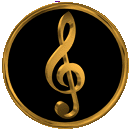

![]()
"MIDI Goes to Church"
by David Lee Heinzman
INTRODUCTION*
When MIDI was first incorporated into classical church organs in the late 1980's, many eyebrows began to raise - including my own. As a musician, I certainly was familiar with synthesizers, drum machines and the like, but as a church musician, I had dismissed these devices for church use except for an occasional youth musical or other "contemporary" offering. Thus, the ability to control these devices and to play non-organ sounds from a church organ (whether pipe or electronic) via MIDI seemed to have a limited application. In fact, my fear was that MIDI could possibly be counterproductive to upholding a strong musical tradition!
Well, how wrong my first impressions were! MIDI is not, as some would say, a voracious musical monster out to devour and replace "real musicians." Quite the contrary, MIDI is an inquisitive child, perhaps precocious, but like all children, requiring understanding, patience and guidance. In practice, MIDI is much more than "hooking up" a synthesizer to an organ. MIDI is a powerful tool that offers a multitude of useful applications for the church musician, especially in the areas of performance and education. But first, let's continue with the brief history of MIDI as it relates to the church.
![]()
While many church musicians agreed that MIDI as a system was useful and had great musical potential, most found the sounds created by traditional synthesizers to be inappropriate for church use. Those synthesizers which did create "acceptable" church sounds were often too expensive and/or cumbersome for the average church or church musician to own. The use of digital performance recorders (sequencers) in ecclesiastical and concert settings was virtually nonexistent due to the complexity of both the devices and their instructions. Furthermore, early attempts by some concert organists to incorporate synthesizers into organ programs (usually held in churches!) were often met with disdain and opposition. In short, the environment for MIDI to flourish in the church was inhospitable.
Given this initial less-than-enthusiastic response to MIDI in church, manufacturers of MIDI equipped instruments and devices began to realize that, in order to appeal to the church musician, certain changes in the equipment were needed. These changes included more useful church sounds such as digitally sampled voice, choir, orchestral strings, winds, brass and handbells, as well as a simplification of sequencing devices and their instructional materials. Physical changes included compactness and attractive cabinets to compliment church settings.

Although the number of these new generation, church-oriented MIDI devices is small, stunning results in performance can still be achieved through high-quality, easy to operate, reasonably priced instruments. Since MIDI is an expandable system, new and improved devices can be added as they become available. As a result, more and more MIDI equipped instruments are gaining acceptance among congregations of various denominations. I would encourage any organist who substitutes to become familiar with MIDI equipment, especially keyboards - you may be called upon to play one soon!
As church musicians exploring the unfolding world of MIDI, it is important for us to understand that we share a MIDI system which was developed for the entire music industry, but for which we must choose our own specific equipment. This means we must re-educate ourselves and become familiar with MIDI terms and procedures that are foreign to us, but commonplace to secular musicians. We must also realize that not all MIDI systems on classical organs are the same - some systems are very comprehensive and others are frustratingly incomplete. In other words, examine and know the limitations of the instrument(s) you own or are going to purchase.

The purpose of this Guide, then, is multi-faceted: to educate and inform, offer guidance, inspire creativity, share MIDI experiences and ultimately, to help present MIDI as a viable enhancement to worship. It is also offered as a source of recruitment in a critical time when church musicians face extinction. The response to MIDI by young musicians is overwhelmingly positive. We need to capture and cultivate their enthusiasm and train them on the tools of their future. Never in the history of church music have we, the church musicians, had such a unique opportunity to help shape the face of church music.
Three final notes regarding this Guide: it is designed to be read straight through, with each chapter building upon the last; unfamiliar terms not defined in the text are highlighted in bold print the first time they appear and can be found in the glossary; by no means is this Guide the final answer - this is just the beginning of the "MIDI Goes to Church" story.
* - The above text is excerpted with permission from the Introduction of the book "MIDI Goes To Church." It is used here for promotional purposes only and may not be copied, reproduced or distributed, in whole or in part, without the express written consent of Laurendale Associates.

|
To order David Lee Heinzman's To return to the Main Laurendale Menu Page click on MAIN. |

|
![]()
Laurendale Associates
15035 Wyandotte Street
Van Nuys, CA 91405-1746
voice: 818.994.6920
fax: 818.994.6958
If you encounter any problems using this site
please report them to:
[email protected]
This website including all contents, text, graphics, music and other associated media files are © 2002 by Laurendale Associates and may not be copied, duplicated or reproduced, in whole or in part, without the express written consent of Laurendale Associates. Audio clips, excepts, sample pages and all other materials herein are used with permission and are intended for promotional purposes only and are not licensed for direct consumer use. If you have any questions regarding licensing and usage of materials, including recording and performance rights, please contact Laurendale Associates at the address shown above.